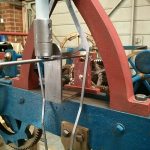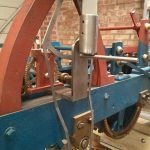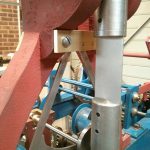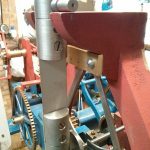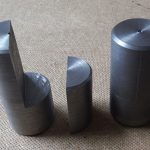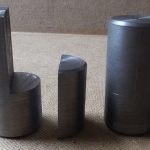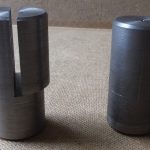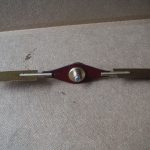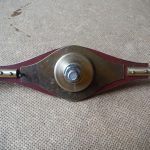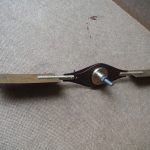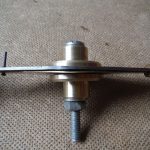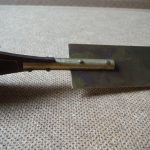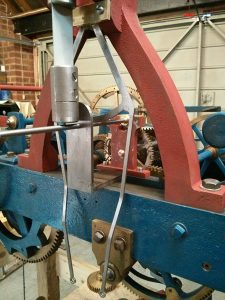
This is a quick first look at the gravity arms for the escapement. Unfortunately we have no direct plans for these arms, although the principal is explained in a number of book that we have along with generic designs. We also have limited access to another Smith clock with one, but the people of Duffield would probably not appreciate it if we stopped the clock and dismantled it to scribe around its parts. As a result these have been made from a combination of reference books, awkwardly taken part-measurements and careful study of our own photographs.
I’m not going to include any technical details yet because we don’t know if they will work! We hope this won’t become a process of trial and error but there might be some fine tuning to be done at least. I’ll post more pictures of our progress and details of any problems we find as we continue. Once we have it working I will, of course, provide proper details. These arms have been made from multiple parts welded together which I don’t imagine is how the originals were done, presumably they were cut from a single piece. However, this technique has made them a lot quicker and easier to produce (important since we might have to make more variations yet, if they don’t work) and the results look fine. Even easier would have been getting access to a water-jet cutter, then we could have just drawn them up on the computer and a few minutes later had a perfect set pop out of the machine.
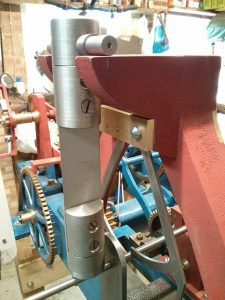
A quick post to show the new pendulum suspension. This is a departure from the square version on the St. Alkmund’s church clock, but it’s been made to plans from Smith of Derby so it is an authentic design (if only we had plans for some of the more complicated bits, like the escapement!). There’s no way of knowing which design this clock would have had originally, so I’d be happy with either.
It’s surprising just how heavy this bit is, but it’s nothing compared to the weight of the whole pendulum. In actual fact we don’t know what the pendulum bob should weigh, but it’s a fair estimate to say it’ll weigh quite a bit. I really hope the new casting was well made, because all that weight is going to be hanging off it!
The current bolts are temporary ones and that is not spring steel connecting the two parts yet – we’re having trouble tacking down a source of suitably sized spring steel strip (at a sensible price). You will also notice gravity arms have been added, as well as the brass plates that hold them, but more on that in another post.
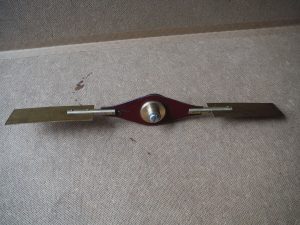
The double three-legged gravity escapement uses a fly to dissipate some of the excess energy in the system. When the escapement unlocks the legs of the escapement move 60 degrees before coming to a sudden stop again. The fly helps to reduce the acceleration of the escape wheel and, like the fly on the striking train, needs to be able to continue to move a little when the arbour stops suddenly. Unlike the bigger fly this one doesn’t use a ratchet, instead it uses a friction device. We need enough friction that it gets turned with the arbour starts to move, but when the arbour stops it should be able to slip and come to a natural stop. The fly was made from a drawing supplied by Smith of Derby when my Father visited them. It’s no coincidence that it looks just like the one on the St. Alkmund’s church clock.
The pictures below show the completed fly, with a bolt through the middle where the arbour would normally be – which is why it looks a little wonky in some of the pictures.
I finally decided a blog could be handy

